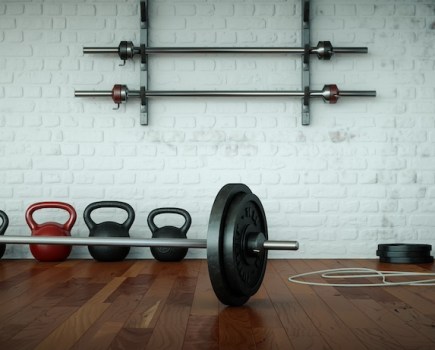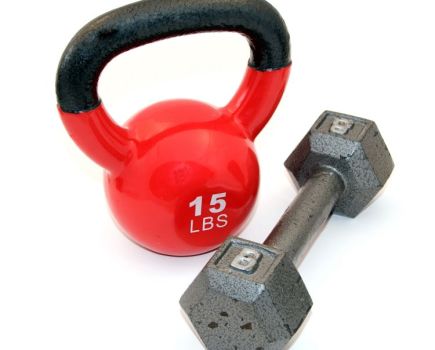In June 2017 Alex Honnold cemented his reputation as one of the greatest rock climbers of all time.
Using a method called free-soloing – climbing without ropes or any safety equipment – he scaled the 900-metre-high sheer rock face of El Capitan in California’s Yosemite National Park.
Free soloing is the most dramatic and dangerous of all climbing techniques – just the athlete versus the mountain.
Alex’s feat was famously recorded in a 2018 documentary called Free Solo which even the hardiest TV viewer will find vertigo-inducing. The New York Times called it “one of the great athletic feats of any kind, ever.”
Eight years on, Alex now lives with his wife Sanni McCandless and his two young daughters, June, 3, and Alice, 1, in Las Vegas – in a real bricks-and-mortar house, this time.
“When you say ‘Las Vegas’, everyone thinks of The Strip,” he tells Men’s Fitness magazine. “But Vegas actually has the best outdoor rock climbing in the country. It has incredible access to the outdoors.”
The Devil’s Climb
Despite having a young family to care for, Alex still gets an occasional taste of his former climbing-bum life. Last summer he teamed up with his favoured climbing partner Tommy Caldwell to film a documentary for National Geographic channel.
Entitled The Devil’s Climb, it sees the two athletes taking on a vast, imposing mountain called Devil’s Thumb, on the border between Canada and Alaska.
Rising out of an enormous icefield to a pointed summit 2,767 metres above sea level, Devil’s Thumb has proved fatal for several hubristic climbers over the years. Its most dramatic feature is its northwest face which escalates for more than 2,000 metres at an average angle of 67 degrees.
The mountain was first summited back in 1946, so Alex and Tommy decided to give themselves the extra challenge of ascending via a ridge of four spiky peaks – the Witches and the Cat’s Ears – before embarking on a final 460-metre wall to the main summit.
And to make things even more dangerous, they allowed themselves just a single day to complete the whole climb, forcing themselves to work at speed and with unusually long pitches. No other climber had achieved this particular feat before.

Age no barrier to Alex Honnold
Neither man is a spring chicken – Alex will be 40 in August, while Tommy will be 47 in the same month. Yet they are both as lean and fit as you would expect professional climbers to be: wiry and each weighing around 72kg.
Not for them, strict gym workouts, though. Instead, you’ll often see both men hanging from bars and doing pull-ups to strengthen their climbing arms. Basic calisthenics are part of their regular fitness, too, and they’re not averse to hiring fitness trainers when they need to.
On trips, like this latest one to Devil’s Thumb, they encouraged each other to train hard physically. En route to the mountain, they decided to travel by road bike, cycling 2,600 miles all the way up through the west of the United States and Canada to the border with Alaska.
Once the road ran out, they sailed and then hiked the rest of the way, eventually arriving at the foot of Devil’s Thumb after negotiating a treacherous ice field.
Tommy says this of their fitness regime: “One of the many things I love about doing trips with Alex is that he becomes my coach. He’s so motivated to do that. He likes graphs and spreadsheets.”
Alex Honnold’s no fear approach
Aside from his innate climbing skills, what is most impressive about this man is the apparent lack of fear he displays on the mountain face.
The year before his famous El Capitan ascent, Alex allowed scientists to test his brain in an MRI scanner, after which they concluded that his fear-processing neurons – called the amygdala – respond differently to those of a normal person. They claimed he didn’t feel fear like the rest of us. Alex himself rejects this idea, however. The truth, he says, is more subtle.
“Basically, anything you do enough, you desensitise yourself to,” he tells Men’s Fitness. “I’ve probably been deadened to certain levels. But I know that I get scared climbing. Of course, I feel fear. Climbing is really scary.”
It’s not like he hasn’t witnessed the consequences of mistakes on the mountain. He remembers clearly the first time he saw a fellow climber fall to his death. It was at Red Rock Canyon, a popular climbing spot close to Las Vegas.
“It was this horrible freak accident thing,” he told online magazine The Talks. “He fell and he cracked his head and basically just bled out. That was the first time I’d ever actually seen a climbing accident like that. It was kind of sobering – he was even wearing a helmet. It was a reminder of how dangerous climbing can be if things go wrong, even when you have all the ropes on.
“You try to take some kind of lesson from it, but ultimately you’re still always doing your absolute best to not die in an accident. I probably have a more nuanced relationship with death now because I’ve thought about it a lot more.”
On becoming new fathers, as men are constantly reminded by nature they need to stick around to provide for their offspring, many find they reassess their attitude to sporting risk. Alex claims his own attitude is the same it has always been.
“I wasn’t trying to die before I had kids,” he says, reminded of his two young daughters at home. “And now I’m still trying not to die.” In other words, he’s always had a nuanced relationship with death.
And there are plenty more adventures to come. Over the years he has appeared in dozens of documentary films and TV programmes, and in the future, he hopes to star in more. Recently he pitched ideas to film companies that involve climbing in the Middle East, the Alps and Northern Canada. There’s clearly no sign of slowing down.
He was once asked what he planned to do after retiring from the sport. His answer revealed just how much he loves being up in the mountains: “When I’m no longer a pro climber, it will just give me more time to go climbing, which is going to be awesome.”








